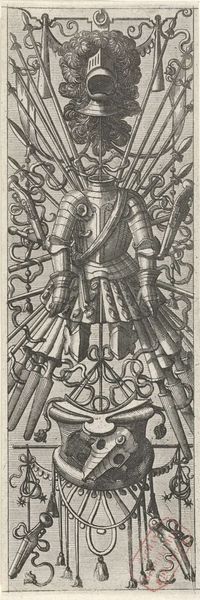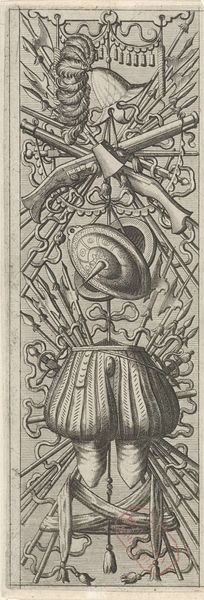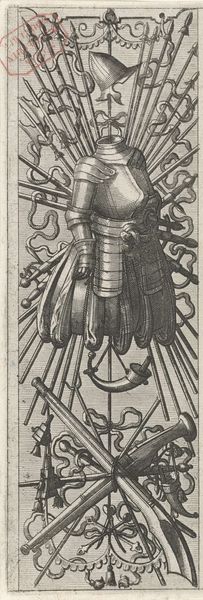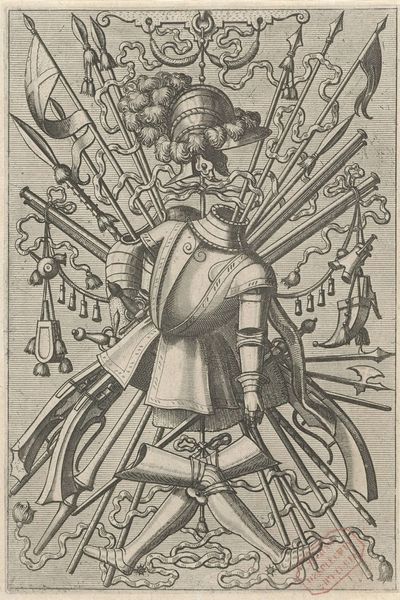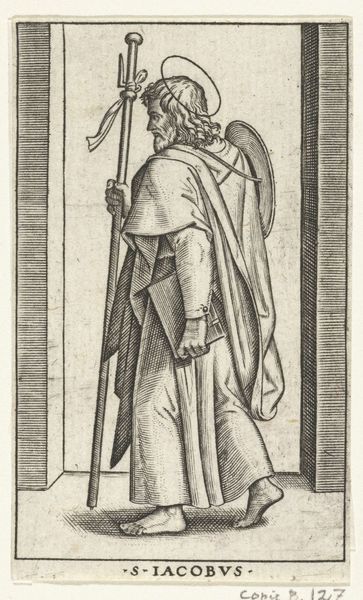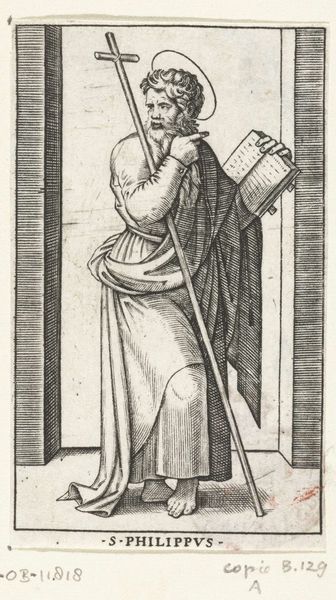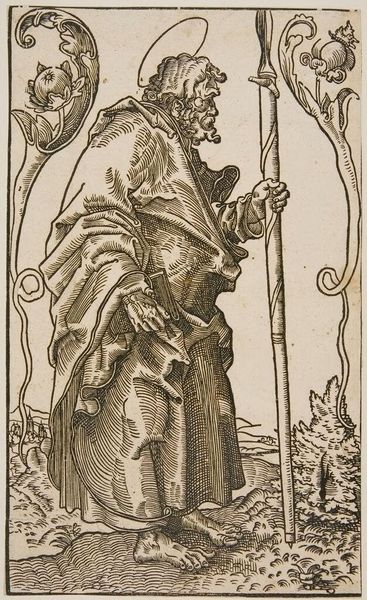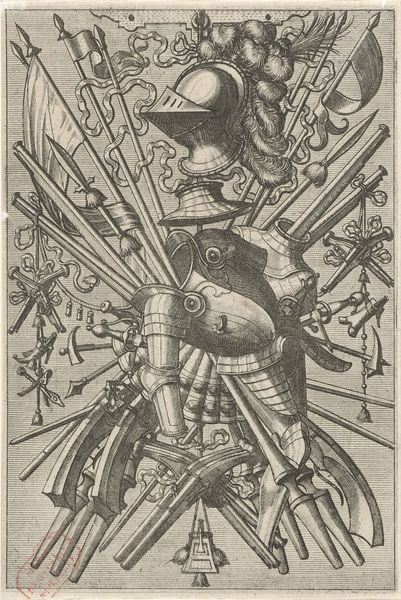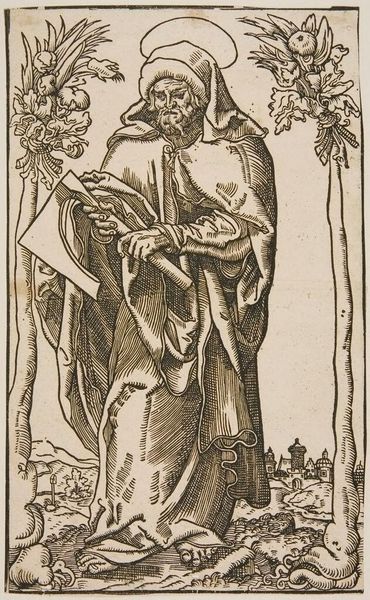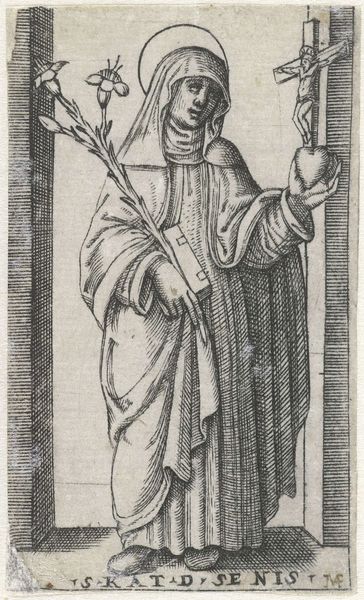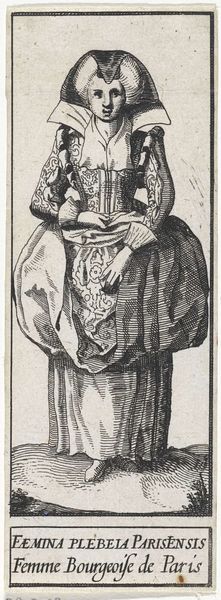
Dimensions: height 183 mm, width 61 mm
Copyright: Rijks Museum: Open Domain
Curator: This print, currently held at the Rijksmuseum, is entitled "Wapentrofee, kuras met ruitermantel," or "Trophy of Arms, Cuirass with a Rider's Cloak," dating back to 1572. It's attributed to Johannes or Lucas van Doetechum. What are your first thoughts? Editor: Well, it definitely screams power and perhaps even…violence. The meticulous arrangement of weapons around the central figure, the almost ornamental use of tools designed to inflict harm, is quite striking, isn’t it? It's unsettling. Curator: The piece functions as a vanitas image, reminding us of earthly vanities through an abundance of detail. The print itself, made with metal engraving and pen drawing techniques, captures a particular moment of martial prowess and cultural anxiety during the late Renaissance. Editor: I agree, it also raises questions about the romanticization of warfare and militarism. This period was characterized by religious and political upheaval, and these 'trophies' are very carefully composed to represent power, yet, they feel deeply impersonal. Who are we honoring here? The collective or just violence itself? Curator: That’s a pertinent question. Consider the context: The Dutch Revolt was raging. Prints like this would circulate to promote the ideals of leadership and Dutch strength amidst turmoil. The cuirass symbolizes protection and status, which could then imply who needed protecting and who held the status to give such protection. Editor: It's fascinating to consider the implications for different audiences. Someone in power might see valor and justification, whereas someone in a more vulnerable position would likely feel terror and helplessness. I find it disturbing that these sorts of images serve as a glorification of militaristic masculinity. Curator: Indeed, it can serve to remind us about the constructed nature of these displays of might. Examining its place in society then, both informs its meanings for us today. Editor: Absolutely. It challenges us to consider who benefits from the circulation of such images. Curator: And perhaps prompts a necessary reckoning with their continued influence. Editor: Leaving me wondering: how can we reclaim images like these from narratives of power to advocate peace?
Comments
No comments
Be the first to comment and join the conversation on the ultimate creative platform.
